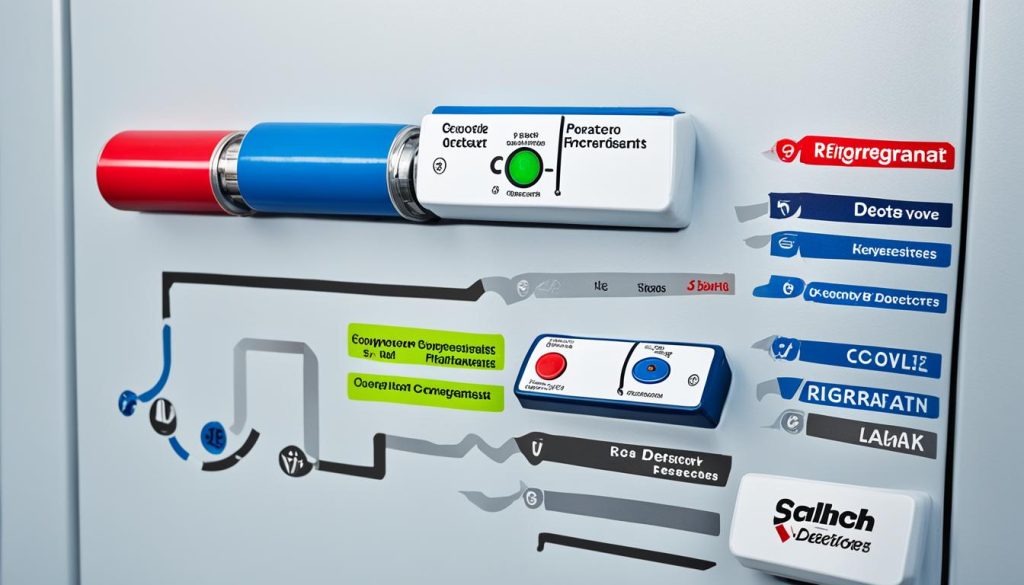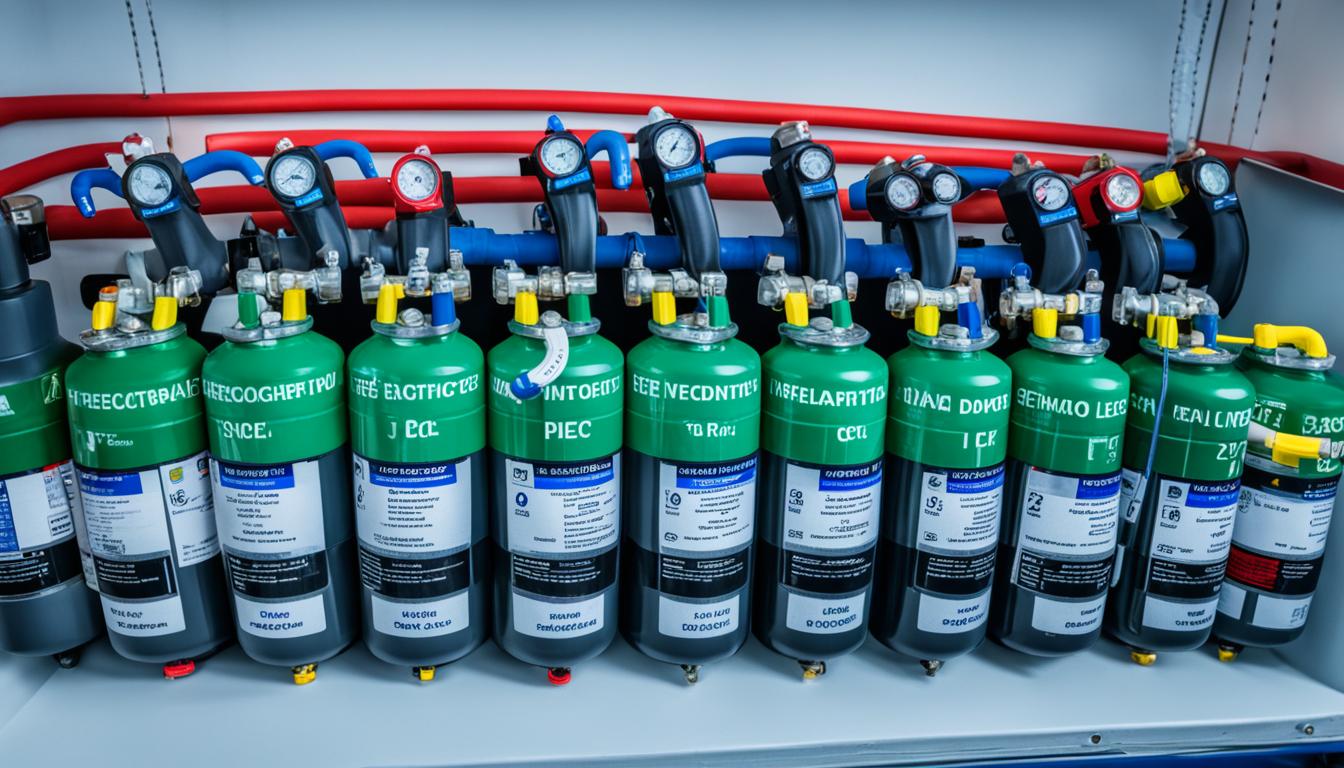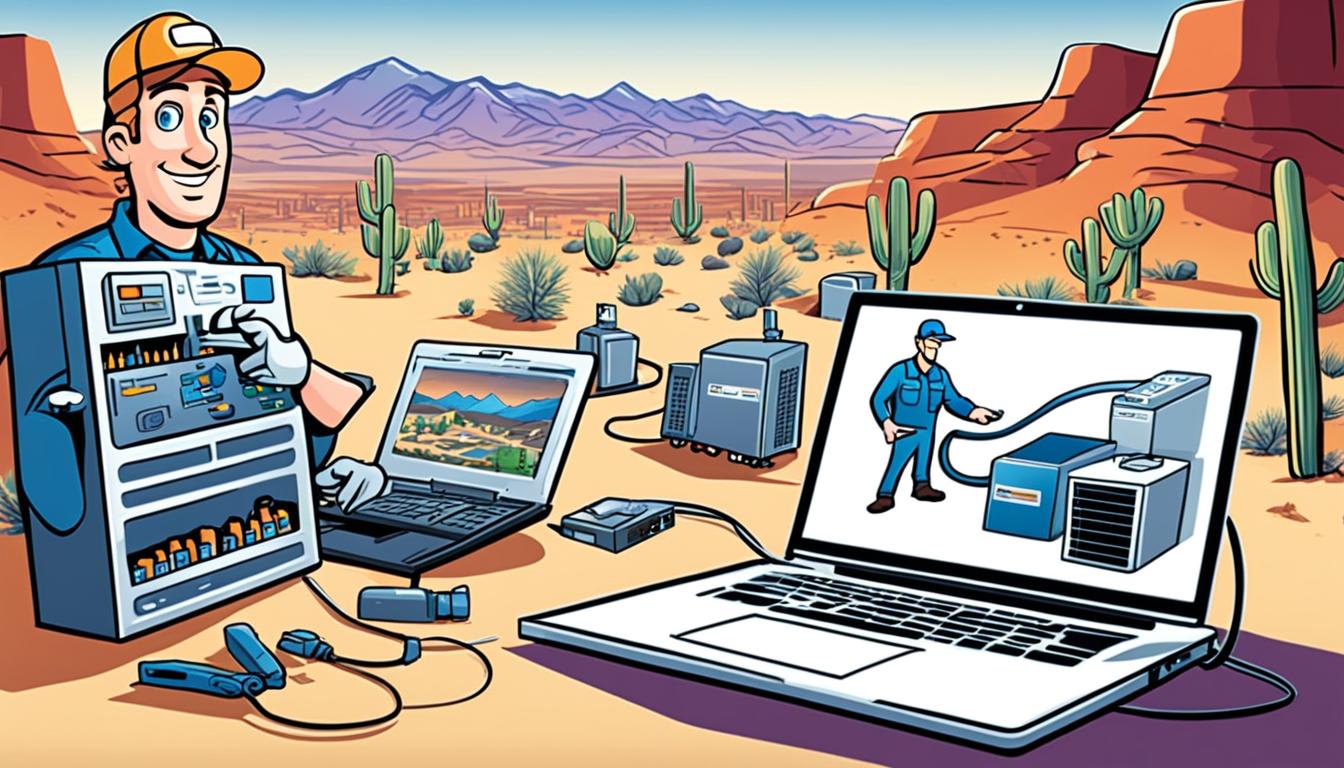Picture this: it’s a scorching summer day, and you step into your air-conditioned oasis, seeking relief from the sweltering heat. But instead of being greeted by a refreshing breeze, you’re met with disappointment as you realize your AC unit is malfunctioning. It’s a frustrating and uncomfortable experience that no one wants to go through.
As an AC repair contractor, you understand the importance of keeping HVAC and refrigeration systems in top shape. And one of the key aspects of maintaining these systems is detecting and repairing refrigerant leaks. But how do you choose the right leak detector for different types of refrigerant gases?
Don’t worry, we’ve got you covered. In this article, we’ll explore the different types of refrigerant gases, the importance of refrigerant leak detection, and the pros and cons of various leak detection methods. We’ll also provide you with valuable tips on factors to consider when purchasing an electronic refrigerant leak detector.
Key Takeaways:
- Choosing the right leak detector is crucial for detecting and repairing refrigerant leaks in HVAC and refrigeration systems.
- Refrigerant leak detection is essential to prevent equipment damage, energy wastage, and harmful environmental impacts.
- Traditional detection methods like soap bubbles and fluorescent dyes may not be reliable for small leaks.
- Electronic leak detectors offer more accuracy and efficiency, with options like Heated Diode, Ultrasonic, and Infrared technology.
- When purchasing an electronic leak detector, considerations include detectable gas range, ease of use, durability, and maintenance requirements.
Importance of Refrigerant Leak Detection
Refrigerant leak detection is essential for HVAC and refrigeration systems to operate efficiently and prevent breakdowns. Small leaks can have a significant impact on the performance of the system, leading to increased energy consumption and higher utility bills.
Leak detection is crucial for preventing equipment damage and expensive repairs. Moreover, the refrigerants used in these systems can be harmful to the environment, contributing to ozone depletion and global warming.
With the phasing out of certain refrigerants and the increasing importance of recycling, leak detection has become more critical than ever. Traditional methods, such as listening for hissing sounds or detecting chemical smells, are unreliable and may not detect small leaks effectively.
While the soap bubble method is still used, it can be messy and is often ineffective for small leaks. Thankfully, electronic leak detectors offer a more efficient and reliable solution. These detectors utilize advanced technologies like Heated Diode, Ultrasonic, and Infrared to detect refrigerant leaks with greater accuracy.
When purchasing electronic leak detectors, there are several factors to consider. Look for detectors that can detect a wide range of gases, ensuring compatibility with various refrigerants. Ease of use, durability, warranty, and maintenance requirements are also important considerations.
Pros and Cons of Different Refrigerant Leak Detection Methods

Different leak detection methods have their pros and cons, depending on the specific task and situation.
Traditional methods like soap bubbles and fluorescent dyes are affordable but may not be reliable for small leaks.
Electronic leak detectors offer more accuracy and efficiency, but the choice between technologies depends on the refrigerant being used.
Heated Diode and Heated Electrolyte detectors use heat to break apart refrigerant molecules for analysis. Heated Diode is more sensitive to specific refrigerants and requires regular cleaning and maintenance.
Infrared detectors utilize infrared light to analyze the type of refrigerant gas present and offer good sensitivity and accuracy across all refrigerant types.
Metal-Oxide Semiconductor (MOS) detectors are sensitive to various gases and chemicals, leading to false-positive alarms and less sensitivity to smaller leaks.
Ultrasonic leak detectors detect the noise created by a gas leak but may have limitations in sensitivity.
Choosing the best leak detector depends on factors like sensor life, sensor degradation, false-positive triggers, and the refrigerants being worked with.
| Leak Detection Method | Pros | Cons |
|---|---|---|
| Soap Bubbles | – Affordable – Widely available |
– Not reliable for small leaks – Can create a mess |
| Fluorescent Dyes | – Affordable – Easy to use |
– Limited effectiveness for small leaks – Requires additional equipment |
| Heated Diode Detectors | – Highly sensitive to specific refrigerants – Suitable for a wide range of gases |
– Requires regular cleaning and maintenance – May have false-positive triggers |
| Infrared Detectors | – Good sensitivity and accuracy across all refrigerants – Minimizes false positives |
– Higher initial cost – Requires training for proper use |
| Metal-Oxide Semiconductor (MOS) Detectors | – Sensitive to various gases and chemicals | – Prone to false-positive alarms – Less sensitive to small leaks |
| Ultrasonic Detectors | – Non-destructive detection method – Can detect leaks in hard-to-reach areas |
– May have limitations in sensitivity – Requires proper training for accurate use |
Factors to Consider When Purchasing an Electronic Refrigerant Leak Detector
When it comes to choosing the right electronic refrigerant leak detector, there are several important factors that technicians should consider. One of the key considerations is the technology used by the leak detector and its compatibility with the specific refrigerants you are working with. Two commonly used options are Heated Diode and Infrared leak detectors.
Heated Diode leak detectors are a more affordable option that offers good performance for general refrigerant leak detection. On the other hand, Infrared leak detectors provide better sensitivity and a longer sensor life. They also minimize false positives and maintain their sensitivity throughout the lifespan of the sensor.
Aside from Heated Diode and Infrared, other technologies to consider include Heated Electrolyte, Metal-Oxide Semiconductor (MOS), and Ultrasonic leak detectors. Each of these technologies presents its own advantages and limitations, so it’s essential to understand how they align with your specific needs.
When making your purchase, also take into account the quality and reputation of the leak detector brand. Consider the refrigerants you currently work with and any potential future transitions in refrigerants. In addition, look for a leak detector that offers a wide range of detectable gases, ease of use, durability, a generous warranty, and the convenience of rechargeable batteries. Lastly, make sure you understand the maintenance requirements of the leak detector to ensure optimal long-term performance and accuracy.





0 Comments